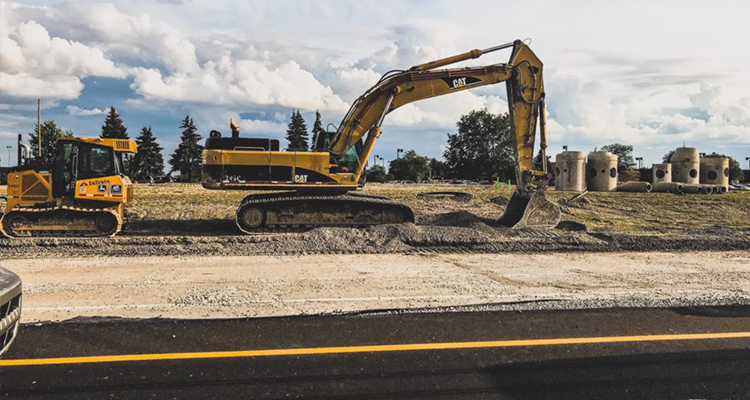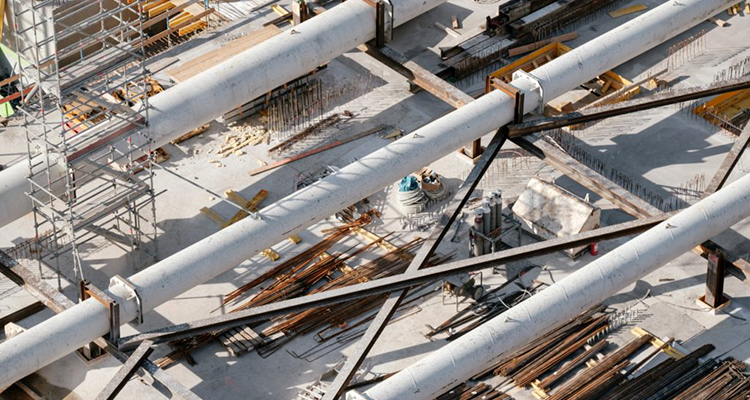Technical Area | Articles
The place to solve all your BIM doubts
Construction Site of the Future- BIM Tools
BIM Implementation Lean & Industrialized construction Infrastructures
Introduction
We begin our discussion on the future of construction sites with a brief look at how construction has evolved. This evolution takes us to the current use of Building Information Modelling (BIM). More importantly, we need to look at a few important trends that are likely to impact future construction sites.
Let’s first recall, that the term “building” we are referencing within the BIM definition, is the process itself, not a structure. Process models of any kind are based on information.
We all know that a repeatable process lowers uncertainty. It is this concept of improved outcome certainty that continues to drive the evolution of construction models. The job site needs to continually consume and generate information to improve the building process. As construction challenges become more and more complex, risk factors increase.
It is only through the expansion of BIM tools that future construction challenges can be met. In this brief article, we will look at the likely process changes that impact future building methods. We will examine the factors that will drive construction sites of the future.
Background
As a concept of BIM has been around forever. The practical definition of BIM is a defined conceptual model, where people and tools are integrated into a building process. As examples: ancient pyramids, temples and the Great Wall, were all constructed with the defined, knowledge-based process at the time and therefore, an ancient form of BIM. Sadly, these ancient processes consumed a lot of human lives and utilized very rudimentary tools.
The origins of what we consider to be true BIM tools began in the later part of the twentieth century with the development of computing solutions. As the data processing systems evolved, so did 2D and 3D CAM/CAD toolsets.
The rate of speed in which vast amounts of data are gathered and later shared with people and machines has evolved significantly in the past few decades. It is this fundamental data processing concept that is important for future building and the evolution of construction sites. This accelerated change continues to evolve the BIM baseline.

Trends for the Future
We can start our look into future trends by extending the trajectory of known capabilities. Our discussion should start with some significant current events, and then bring in some futuristic ideas. A recent article describes the construction of a concrete bridge in 14 hours using a 3D print process. (Marine Corps Tests Combat Engineering Applications Of 3D Printing, Werner, February 2019), https://news.usni.org/2019/02/07/40964.

This 3D build is an example of a future technology changing the construction site. Consider the difference in the plans, communication and support facilities versus the way bridges have always been built. The information data source, the setup of the site, the numbers and types of skills involved are vastly different. One notable change example is security. While the physical site security requirements are far less, given job’s duration of only 14 hours. However, the system data security, must meet rigorous military standards.
The overall BIM concept is very much intact in this printed bridge example. As the Marine Corps article points out “The possibilities for 3D printing applications are limitless”. The concept is to apply a BIM process. A process that plans, shares and applies accurate operational information into the building process.
A 3D printed bridge is old news now. What about the future? What technology changes can we expect and how do prepare for future construction sites?
Excerpts from this 2014 article, provide some key thoughts about future infrastructure needs that are already in motion. (2050 and the Future of Infrastructure, Frey, 2014), https://futuristspeaker.com/business-trends/2050-and-the-future-of-infrastructure/. Technology trends that can be expected to change infrastructure include: driverless cars, highways with massive sensor and transmitter devices, high speed rail and tube transportation systems, water projects, drone delivery, just to name a few.
A very critical future construction component will be sensor infrastructure. Lots of sensors. Per the article cited above “a trillion sensors are likely needed to monitor and control future infrastructure”. BIM technology and construction site readiness will need to lead the way to meet these infrastructure challenges.
The Future Construction Site
To effectively manage these rapid changes in building technology, BIM must continue to adapt. A key area for growth will be the process of gathering the big data content necessary to collaboratively share all aspects of the building process. As stated above, the job site needs to continually consume and generate information to improve the building process.
Some key construction site elements that will change with future tech trends:
Connectivity– An essential site component is a high-speed wireless network to ensure seamless collaboration among designers, builders, logistics and back office support. This level of collaboration requires the support of an effective network operating center to securely provision accounts, provide access to the big data sources and dozens of specialized applications. Help desk and other support will be needed as well. The complexity of the build and security requirements may have this network support in the home office, partially on-site, out-sourced or in combination.
Connectivity means people and equipment to information. Network and data support will be a critical element in future construction sites.

Sensors– To manage the controls for building and logistics processes a massive quantity of sensors will be required. All aspects of site management and the building process will require sensors. Sensors are a component of the “internet of things” concept, where all on-site construction equipment transmit data to central data hub. This will require a much different design for site layout and different skills on-site versus traditional building sites.
Prefabricated Delivery – With greater precision and information from BIM system, prefabricated building components will increase. This increase will in turn be expected to alter the types and forms of delivery services and change traffic patterns to the site.
Robotics – There have been increased development in automated work solutions. Machines now perform many repetitive or dangerous tasks. Robotic equipment backed by BIM data can perform faster and cheaper, as in the 3D printed bridge example above. A future construction site with more robotic work done along-side of traditional workers is a change that is coming. This change can significantly improve the bottom-line, and improve safety. All major leaps in work reduction technology disrupt the workforce and local community. Robot co-workers will impact worker morale and likely change future union negotiations. This is just another site consideration for long term site planning.
Project Management– Project Management is all about planning and risk control. A key value of BIM implementation “is establishing a consistent and repeatable process”, (The Business Value of BIM for Infrastructure 2017, Dodge Data & Analytics) https://www2.deloitte.com/content/dam/Deloitte/us/Documents/finance/us-fas-bim-infrastructure.pdf.
A repeatable process reduces the variability of outcomes at the site. Less variability means lower risk mitigation effort. This in turn allows management to more effectively track, control, communicate and collaborate with the entire team.
Conclusion
Source: https://www.infrapioneer.com/construction-site-of-the-future-bim-tools/











